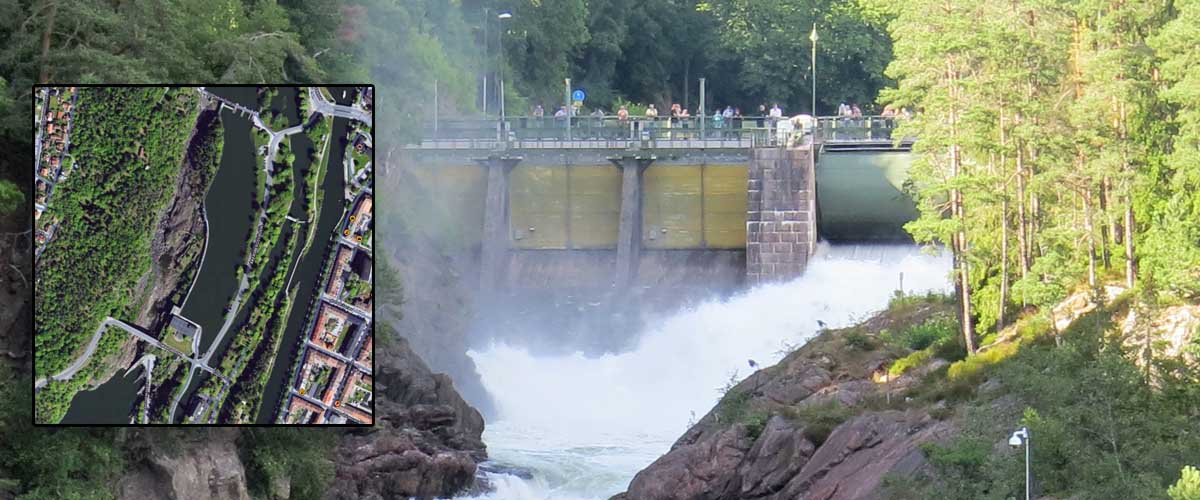Today we’re visiting Trollhättan for the opening of the Trollhättan Falls!
OK, not today, exactly. The Days of the Falls at Trollhättan take place on the third weekend in July, which this year was the weekend of the 15th to 17th, and that’s when Mrs SC and I were there and when I took most of the pictures in this post.
Geography
Let me just put the falls in context for you. Trollhättan is an industrial town on the edge of Lake Vänern in western Sweden. Vänern is the largest lake in Europe (after Ladoga and Onega in Russian Karelia). It drains through one narrow passage into the Göta River, which later flows into the sea at Göteborg (Gothenburg). To reach the sea, the water from the lake must drop about 44 m. Most of the drop, 32 m, is at Trollhättan. Once upon a time this was a dramatic and impressive waterfall, but the water has been tamed and chained in the last two centuries with hydro-electric dams and lock gates.
Still, every summer, to regulate the level of water in Lake Vänern (and attract tourists), the sluices are opened and the old falls fill again with water and you get a flavour of what once was. In the last of the satelite images below, you can see the almost dry gorge of the original falls to the left of the reservoir behind the hydro dams. I took the photos in the animation at the foot of this article standing on the Oskarsbro (Oscar’s Bridge).
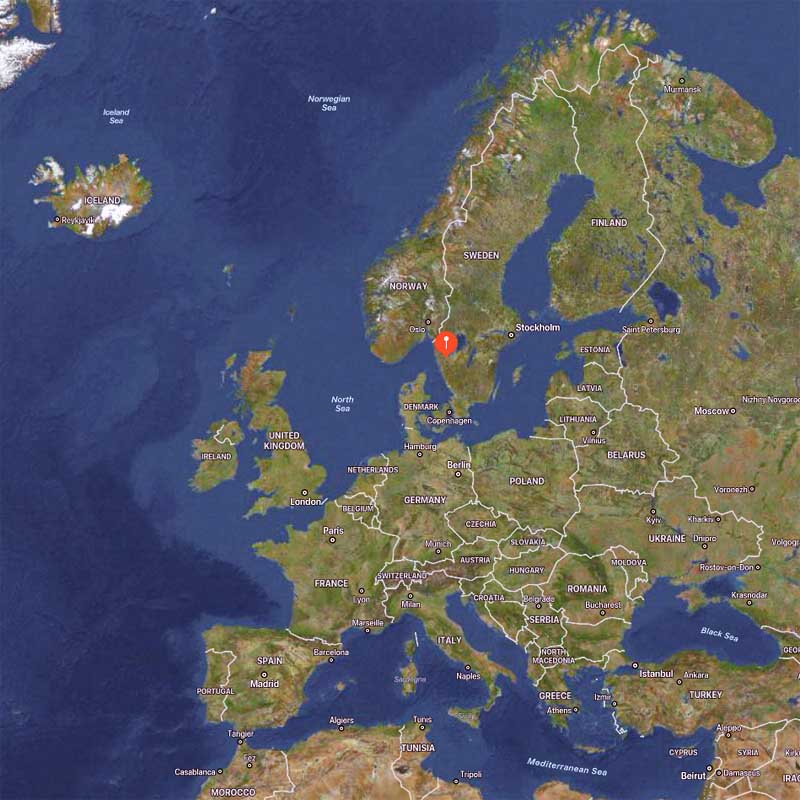


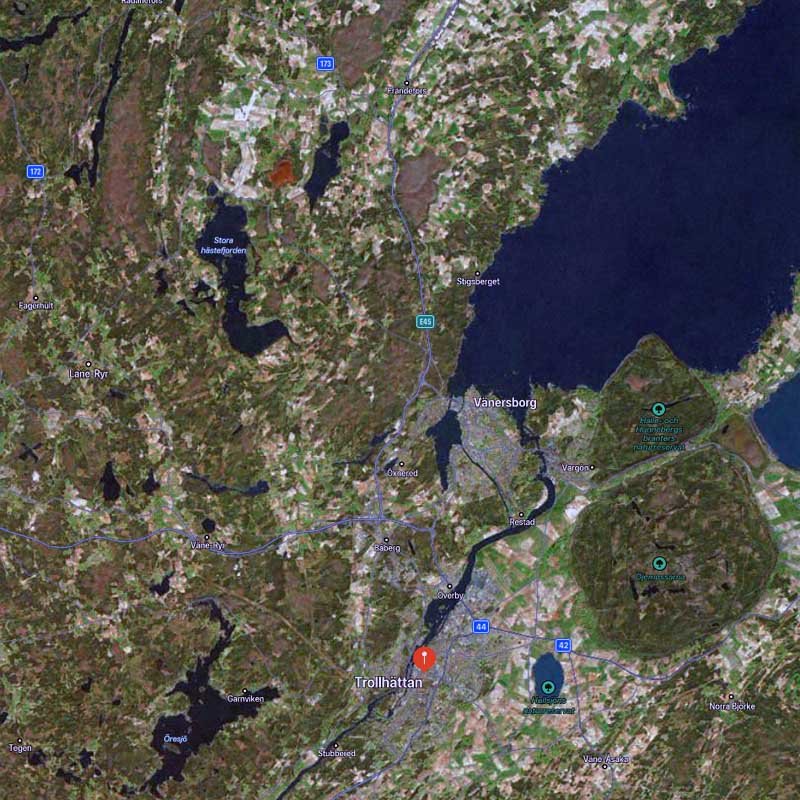

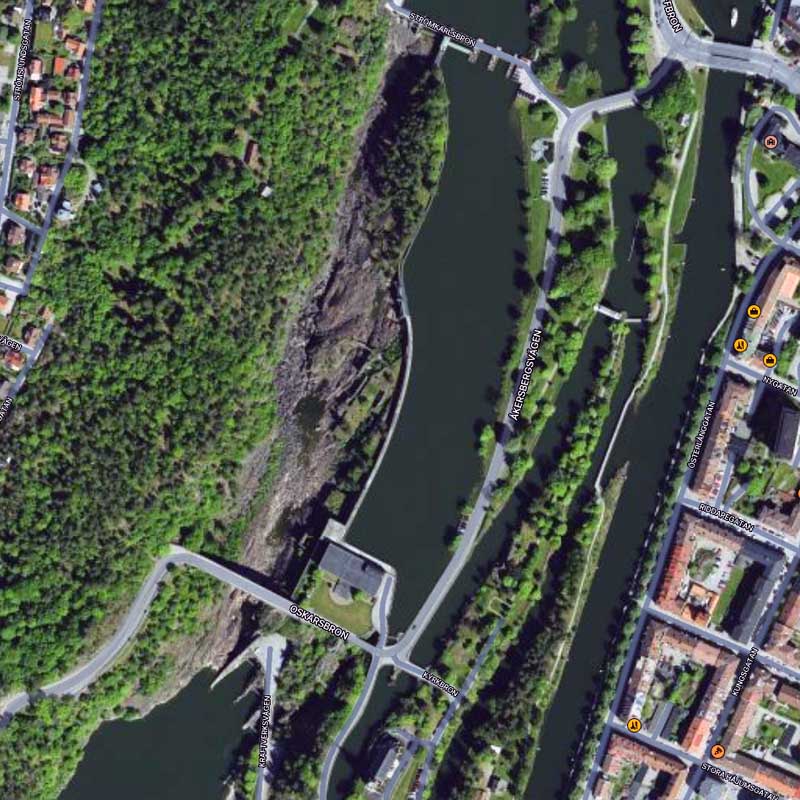
Mary Wolstonecraft and the Trolhättan Falls
In 1795, Mary Wolstonecraft, writer, thinker and feminist, travelling in Sweden, visited Trollhättan. Initially she wasn’t impressed by the developing industrial town, but then she found the falls:

I … wandered about; and at last coming to the conflux of the various cataracts rushing from different falls, struggling with the huge masses of rock, and rebounding from the profound cavities, … it was indeed a grand object. A little island stood in the midst, covered with firs, which, by dividing the torrent, rendered it more picturesque; one half appearing to issue from a dark cavern, that fancy might easily imagine a vast fountain throwing up its waters from the very centre of the earth.
I gazed I know not how long, stunned with the noise, and growing giddy with only looking at the never-ceasing tumultuous motion, I listened, scarcely conscious where I was …
One fall of water, … had an uncommonly grand effect; the water precipitated itself with immense velocity down a perpendicular, at least fifty or sixty yards, into a gulf, so concealed by the foam as to give full play to the fancy. There was a continual uproar. I stood on a rock to observe it, a kind of bridge formed by nature, nearly on a level with the commencement of the fall. After musing by it a long time I turned towards the other side, and saw a gentle stream stray calmly out. I should have concluded that it had no communication with the torrent had I not seen a huge log that fell headlong down the cascade steal peacefully into the purling stream. I retired from these wild scenes with regret to a miserable inn, and next morning returned to Gothenburg, to prepare for my journey to Copenhagen.
From: Letters Written During a Short Residence in Sweden, Norway, and Denmark (1796)
Supposedly Mary’s description of the Trollhättan Falls, published in 1796, was an inspiration for Samuel Taylor Coleridge in his poem Xanadu (aka Kublai Khan). (See here, in the Wikipedia entry on Letters written in Sweden.)
Finding a viewpoint
Trollhättan is not a large town, but the Days of the Falls turn it into a bit of a funfair. Perhaps more so in 2022 after the pandemic had forced its suspension for two years. This made it a bit more difficult to navigate than we’d anticipated. There was a long walk around the gorge, up and down and through the forest to several different viewpoints, before we settled on Oscar’s Bridge (named for Swedish King Oscar II). After the event, we found our way back into town and into a bar before catching the train home.
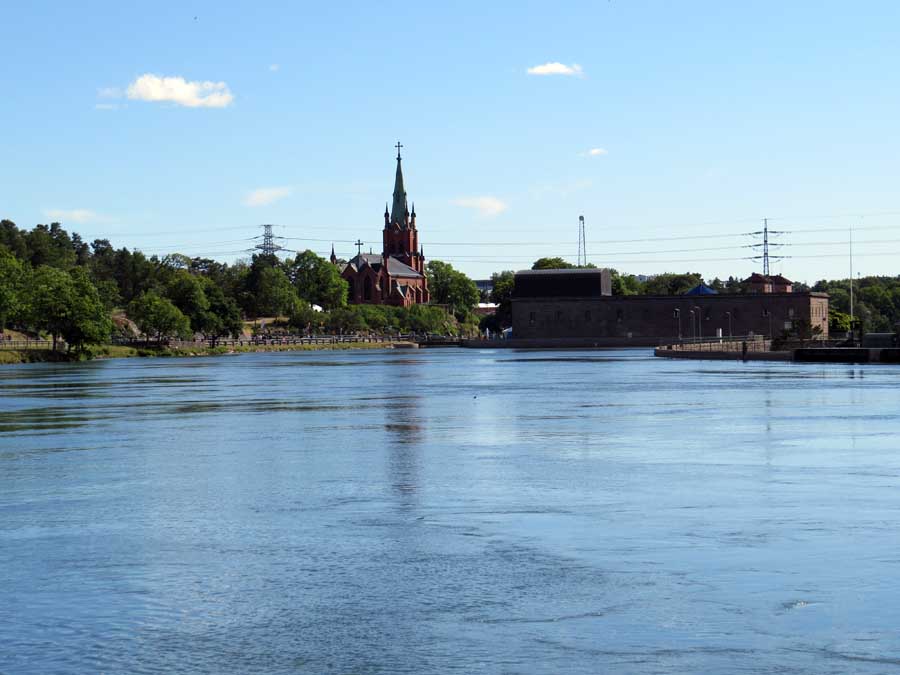


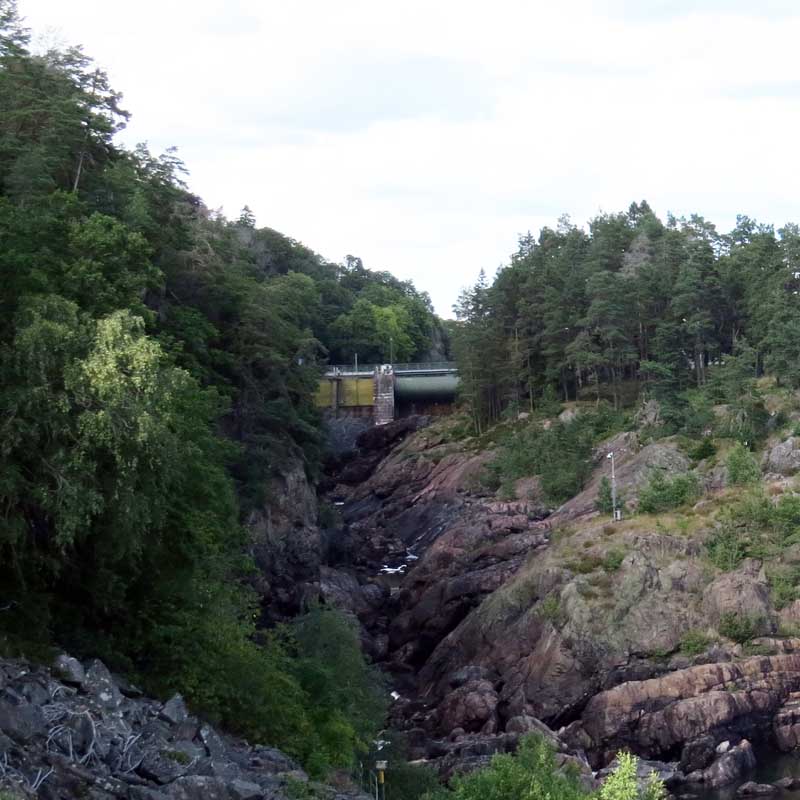

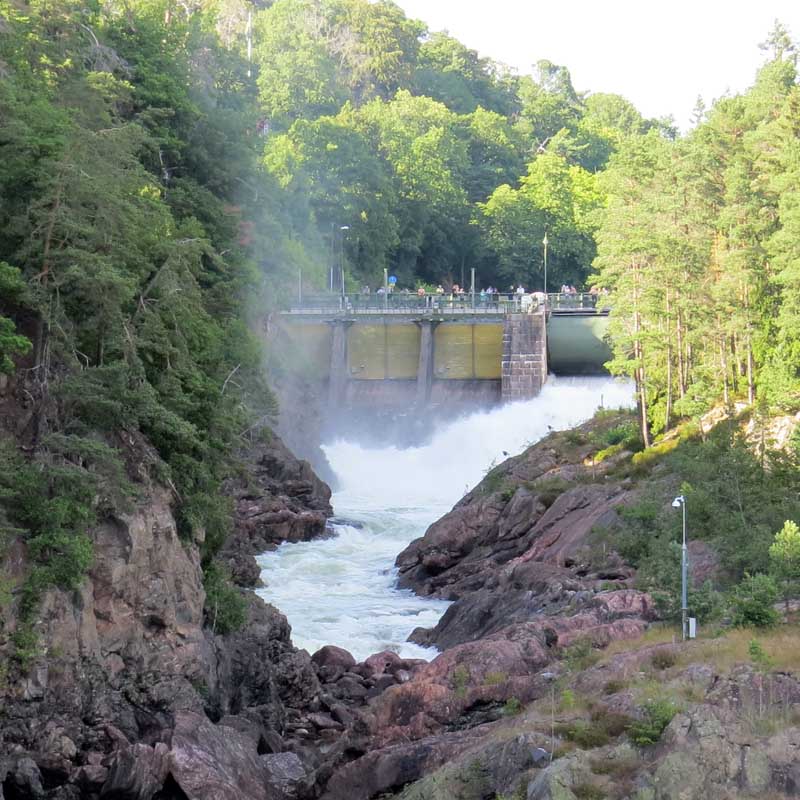

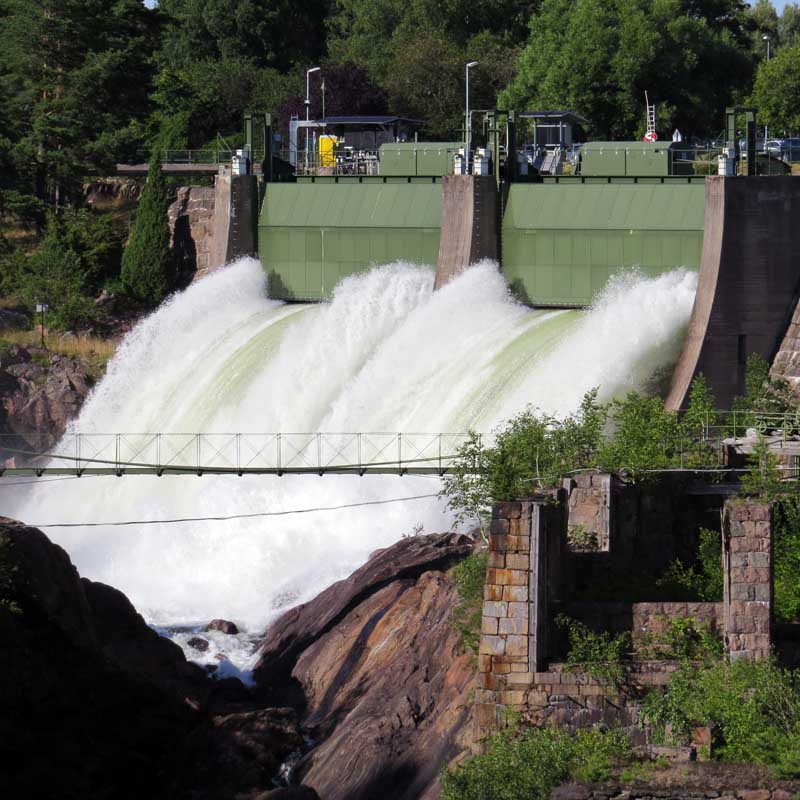

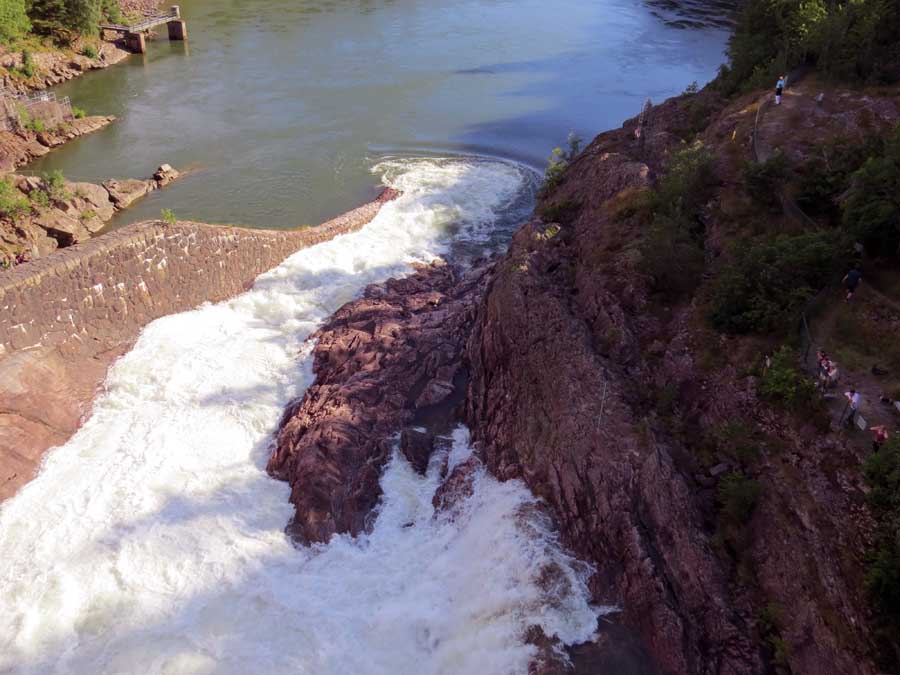

Read and see more …

